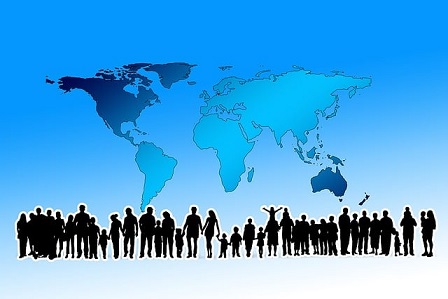
Fertility Rates, Immigration Policy, and the Have-Nots
Demographic trends in the industrial parts of the developed world are fascinating to follow. Several factors contribute to a country’s ability to grow and expand its GDP, including the availability of health, housing, education, and leisure resources. Historically, a major contributor to GDP growth has been population growth. But what happens if population growth stops and begins to decline?
Since the 1950s, the global fertility rate has dropped significantly from five children per woman of childbearing age to 2.2. To maintain our global population, the birth rate needs to be 2.1. Currently, 54% of Northern Hemisphere countries have birth rates below this threshold, putting their populations at risk of declining. Population growth in a country is determined by three factors – birth rate, death rate, and net immigration. For instance, China’s birth rate stands at 1.18 and in 2023, its population dropped by 2.08 million people.
Recently, I was struck by story that came out of Germany. Last year, Germany granted German citizenship to 210,000 immigrants, a 20% increase from 2022. With an average population age of 47 and a declining birth rate, Germany faces significant challenges. Despite immigration being such a political hot topic, the German government has chosen to embrace it. The average age of these newly minted German citizens is 29 years old, and 55% are men, surprisingly with 38% born in Syria. In contrast, formerly more open-door policy countries like the Netherlands, Denmark, and Sweden have all recently enacted stricter immigration policies. Recent polling in Western Europe suggests a rise in right-leaning populism is growing. Time will tell if this causes more changes to immigration policy.
Massive wage disparities exist around the world, creating a growing divide between the ‘haves’ and the ‘have-nots’. On a global basis, if you make above $32,400, you are in the top 1% of earners. The bottom 50% of global wage earners make less than $2.50 per day! In the US, the bottom 10th decile of wage earners makes $17,100. This stark contrast makes the developed world highly attractive. Is there any wonder why the borders of many Western countries are seen as the gates of opportunity to a vast number of people?
The ‘have-nots’ of our global community view the industrial Northern Hemisphere as the promised land and will continue to flock to the shores and borders of these global economic powerhouses. Germany is actively seeking a solution to its worker shortage through immigration. Will other countries follow suit, or will the population decline continue? Just 16 years ago, the European Union’s GDP was 90% of the United States. Last year it was only 65%.
Watching these demographic trends develop should be very interesting. Will the current global powerhouses be able to effectively manage their population challenges through immigration, or other measures, and sustain their economic growth and stability? One thing is certain to be true – the ongoing shifts in population dynamics will undoubtedly shape the future of the global economy.
Carl Gambrell
